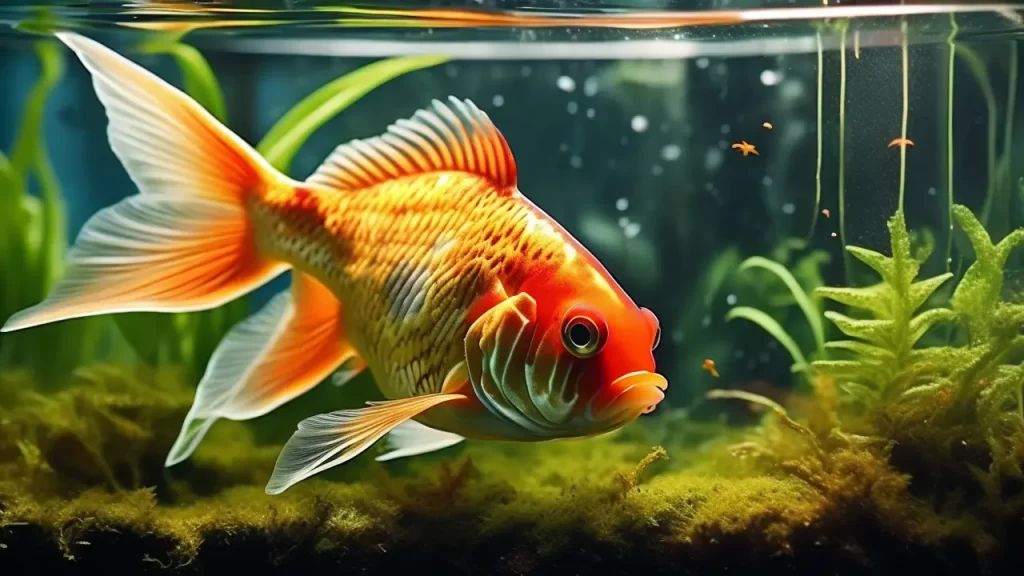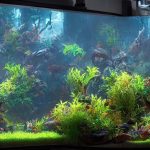What is fish tank algae?
Algae are simple plant-like organisms that can grow in water. They are found naturally in all aquatic ecosystems, including fish tanks. Algae can be green, brown, red, or black, and can grow on surfaces such as rocks, plants, and the glass of your fish tank.

Pros and cons of algae in fish tanks
Algae can have both positive and negative effects on fish tanks.
Pros:
- Algae can provide food for fish and invertebrates.
- Algae can help to remove excess nutrients from the water, which can improve water quality.
- Some types of algae, such as macroalgae, can look attractive in a fish tank and can help to create a more natural environment for fish.
Cons:
- Algae can overgrow and become unsightly.
- Algae can compete with plants for nutrients and light.
- Some types of algae can produce toxins that can harm fish and invertebrates.
When to keep and remove algae
A small amount of algae is normal in a fish tank and can be beneficial. However, if algae starts to overgrow, it can become unsightly and harmful to fish and invertebrates.
When to keep algae in a fish tank:
- If you have fish or invertebrates that eat algae, such as Siamese algae eaters or nerite snails, then you may want to keep some algae in your tank to provide them with a food source.
- If you have a planted tank, then a small amount of algae can be beneficial, as it can help to remove nutrients from the water and improve water quality.
When to remove algae from a fish tank:
- If algae growth is excessive and unsightly, then you should remove it from your tank.
- If algae is competing with plants for nutrients and light, then you should remove it from your tank to promote plant growth.
- If algae is producing toxins, then you should remove it from your tank to protect your fish and other aquatic life.
It is important to regularly monitor your fish tank for signs of algae overgrowth. If you see algae growing on surfaces, you can remove it using a variety of methods, such as:
- Manually scraping the algae off of surfaces with a brush or algae scraper.
- Using a chemical algae remover.
- Adding algae-eating fish and invertebrates to your tank.
If you are unsure whether to keep or remove algae from your fish tank, it is always best to consult with an experienced aquarist.
Tips for preventing algae overgrowth
There are a number of things you can do to prevent algae overgrowth in your fish tank:
- Maintain proper water quality. This includes performing regular water changes and using a filter to remove waste products and toxins from the water.
- Avoid overfeeding your fish. Excess food can break down and release nutrients that can feed algae growth.
- Provide adequate lighting for your plants. Plants help to remove nutrients from the water and compete with algae for light.
- Add algae-eating fish and invertebrates to your tank. These animals will help to keep algae populations under control.
By following these tips, you can help prevent algae overgrowth in your fish tank and create a healthy and beautiful environment for your fish.




